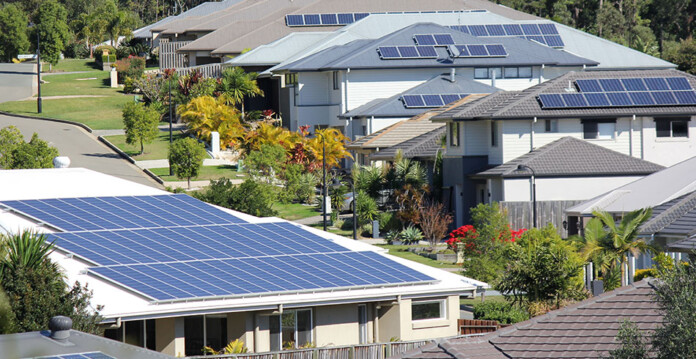Massive savings on energy prices and thousands of Australian jobs will be the benefits of a national strategy to support the uptake of Consumer Energy Resources (CER) such as rooftop solar, home batteries and electrification, according to a new Clean Energy Council report.
Among these benefits, all Australian households and businesses stand to save up to $71 annually on energy bills under such a strategy, irrespective of whether they have installed CER or not.
Related article: Government to deliver household green loans with Plenti
Powering Homes, Empowering People: A National Consumer Energy Resources Roadmap sets out the optimal pathway for Australia to capitalise on its world-leading uptake of rooftop solar and empower all energy customers to benefit from the shift to an electric future.
“It is critical that we get the policy settings right to maximise the benefits of Australia’s rooftop solar success story,” Clean Energy Council policy director distributed energy Con Hristodoulidis said.
“Australia’s electrification journey has only just begun, and adopting CER at even greater scale will be the key to lowering power bills and a timely energy transition.”
Under the lowest cost pathway modelled in the Australian Energy Market Operator (AEMO)’s Step Change scenario, CER storage capacity is expected to increase to 34GW, while orchestrated capacity that is integrated into the grid will increase to a total of 27GW by 2050.
The Clean Energy Council commissioned modelling by energy industry consultancy, Oakley Greenwood, to estimate the cost of not meeting these targets, which included:
- Savings between $35 to $71 annually on energy bills for all Australian electricity customers
- Over $22 billion in savings for Australian taxpayers to 2050
- 18,200 additional jobs in manufacturing, sales, design and installation of CER in Australia
- Up to 3.8 million more Australian homes and businesses with orchestrated batteries, with much larger bill savings
- Keeping Australia on track to meeting its renewable energy and climate targets in a timely manner.
The modelling also suggests that a range of policies and programs should be considered by the Federal Government to maximise the benefits of electrification, far in excess of their overall cost. These include:
- Establishing a $100 million Empowering Communities Fund, to oversee delivery of education and training programs for local communities, small business and regional organisations about electrification and energy efficiency
- Creating a National Home Battery Saver Scheme of up to $6,500 per household to install and integrate behind-the-meter battery storage systems into the grid
- A National Energy Productivity Scheme to provide unified Federal oversight of energy efficiency and orchestration of home batteries and standardise certificates
- Providing opportunities for renters and social housing residents to participate in CER
- Implementing a review into household and business energy futures and pathways towards electrification
- Establishing targets for CER and orchestration on government-owned assets and buildings
- Measures to raise awareness of CER consumer protections, including the expansion of the New Energy Tech Consumer Code (NETCC) and designating a dispute resolution function under state and territory energy ombudsman schemes
- Unlocking and maximising the use of network capacity through customer choice.
Related article: AEMO, AusNet partner on consumer energy data exchange
“Unlike similar reports that focus on supply-side challenges for CER and the grid, the policy recommendations set out in this roadmap will guide Federal, state, territory and local governments in planning over the long term to unlock exciting new opportunities for every Australian household and business,” Hristodoulidis said.
“Empowering homeowners, renters, social housing residents and business owners to understand and adopt CER will build an Australian energy system that is cleaner, cheaper and fairer for everyone.”







